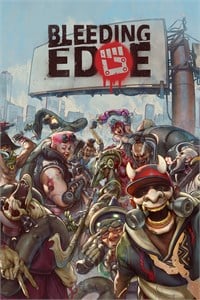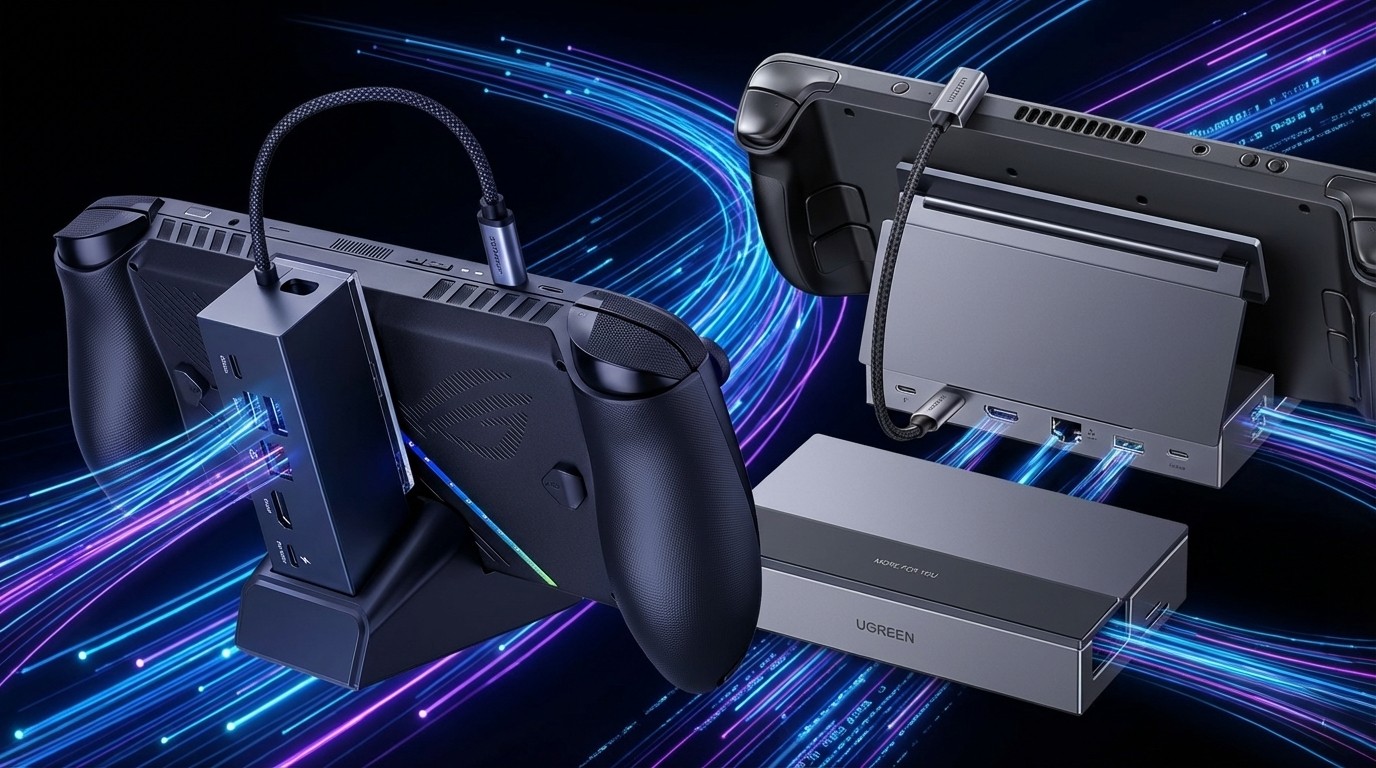Bleeding Edge mega-interview: Discussing the art, animation, accessibility and audio
Developers of Ninja Theory dive into how the game's art style has changed and so much more.
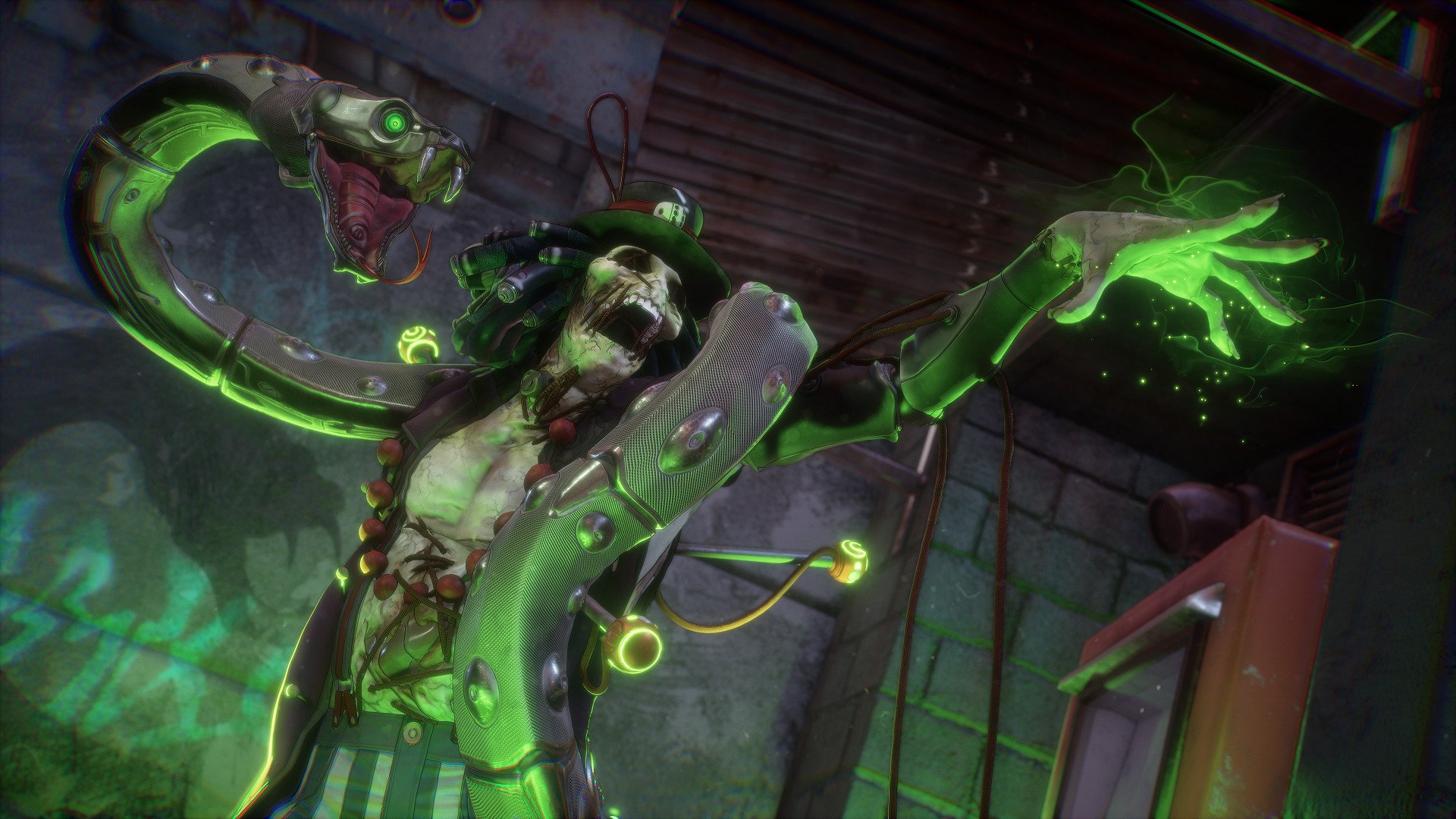
All games go through changes as they develop, but finding the heart and soul of a game can be rather tricky. At a recent Bleeding Edge preview event, I had the chance to speak with Ninja Theory team members Aaron McElligott, Warwick Mellow, and Daniele Galante, the lead artist, principal animator and senior sound designer on Bleeding Edge respectively.
We talked about the design of the characters, aesthetic approaches for the game, and how it evolved, designing around accessibility, and more. I also had the chance to speak with creative director Rahni Tucker and designer Gerald Poon, which you can read about here.
The following interview has been lightly edited for readability.
Bleeding Edge has realistic roots but stylized results
Windows Central, freelance writer, Samuel Tolbert: Alright so, art and animation, there's a lot of it's very stylish, it's very over the top, I love that. Talk me through the process when you're coming up with a new character, or even sort of the origins of the game. How did you decide on the look?
Ninja Theory, lead artist, Aaron McElligot: Man, that's a big one, that's basically everything. At the beginning, I mean we messed it up a number of times. You know, while we were trying, while the game was kind of developing itself and we were working out what it was going to be. We were doing some art on the side and trying to settle on something, it was really challenging.
The game was definitely more realistic at the beginning, you know, because Ninja [Theory] was heading more into kind of, you know, scan data, motion capture, really realistic assets. We were starting there, but it didn't feel right. And it was very hard to make. Because we were only six or seven people for a year. So we did have a version of Gizmo that was very, very detailed, you know, skin pores and all that sort of stuff. But you could just can't read it, and it starts to become noisy. And if you have a character that detailed, you need a world that's that detailed as well. So you can't do that with a small team.
So we started to simplify, and we're trying to work out how we were going to do that. We knew that the game was kind of arcadey, fast-paced, we knew it was going to be that. Warrick, as a kind of key animator, knew it was going to have expressive animation. So we're trying to find references in the area. So I was looking for animes. You know, Ghost in the Shell, Akira, that sort of thing. So we started there, and that was cool for some of the augment designs. But as the game developed from a design perspective, it was becoming more fun and light-hearted rather than an aggressive feeling game.
All the latest news, reviews, and guides for Windows and Xbox diehards.
And the designs that we had at that time didn't really work. So we went back to the drawing boards, and there's an anime I really love called Tekkonkinkreet, which is awesome. Really, really beautiful, the designs and the worlds are very colorful with graffiti, stylized buildings with faces on them and that sort of stuff. So I did a couple of art tests, localized pieces of environment with that kind of idea. And they were okay. But to get the team on board, we really needed a character.
[...]And we had this idea for kind of this lady or someone on a wheel. Initially, I was like, 'Let's do a biker.' But I didn't want, I really didn't want it to be like what you see in kind of stylized illustration. Where you know, the female has this kind of like, unachievable physique. That was kind of the start. We knew we had something with Buttercup because the team would kind of rally and be like 'Oh, she can do this, we can this' and so on. And as soon as you get to that, it basically doesn't shut up. The game is something else by this point, so she became this pillar we could hold the other characters up to, see if they fit in this world.
Samuel Tolbert: Now when it comes to the animation work, with a lot of these characters, there's a lot of subtleties I think some people might not notice it first, like Kulev, who is my favorite, how the snake is actually puppeteering the body ever so slowly. Talk to me about that, are you trying to keep it simple or go as detailed as you want?
Ninja Theory, principal animator, Warwick Mellow: I mean, with the animation I think we knew early on, because it's a multiplayer game, you know that readability is massively key, you know, both for gameplay but also just for, we wanted to push stuff because we wanted people to really enjoy these characters. I think if everyone moved the same and had similar emotions and wasn't as outlandish, it would kind of be a bit boring. We wanted to push it as far as we could, and I knew from an animation point of view, I really want each character to be completely individual in terms of how they run and their gait, the timing, their idle poses, everything, because I thought it'd be really, really nice, just to push it as far as we could in each area. Kulev was a great character. He was he was a sort of a design-lead character.
[...]And so when [Rahni Tucker] wanted this character to you know, curse people, and maybe hex people, boons, that kind of stuff. And it just sort of made sense that maybe it could be voodoo related or something like that. So we thought witch doctors or whatever. And so, obviously, you guys (gesturing toward McElligot) started working on a concept.
McElligot: Yeah, I really wanted it to be like a voodoo doll initially, which is why he's got kind of strings on the side, a couple of pins and stuff like that. And then we were talking more on the idea, like what about if he has a snake on him or going in and out of his body? You know, you keep poking the idea, just keep going and see what else is in there. Also, maybe he's damaged, maybe he's only got one arm, you know, so his animation and his silhouette could be different.
Mellow: Yeah, then because Aaron loved this idea of a snake and I thought 'Actually, maybe the snake could attack, so he's got a regular kind of ghoulish arm and the snake is the other arm. And then Aaron took that a step further and was like, 'Actually, let's make this snake that character.' So the snake is actually the entity that's alive, and the body is just sort of like a taxidermied corpse that is kind of being electrified by these pins and kind of moves and helping him get around the world.
Then Rahni came on again; she started to give this amazing backstory. That he's this Cambridge professor, you know, because obviously, Ninja Theory is in Cambridge, but he loves studying things of the occult and voodoo and those kinds of things. And he manages, you know, in his elderly stage of life to upload his consciousness into the snake. So the snake is actually puppeteering the professor's dead body.
McElligot: Crazy, right, like your standard characters.
Samuel Tolbert: Yeah, exactly, your standard, grizzled, mid-30s white shooter character.
McElligot and Mellow: Exactly!
Bleeding Edge characters: How much is too much?
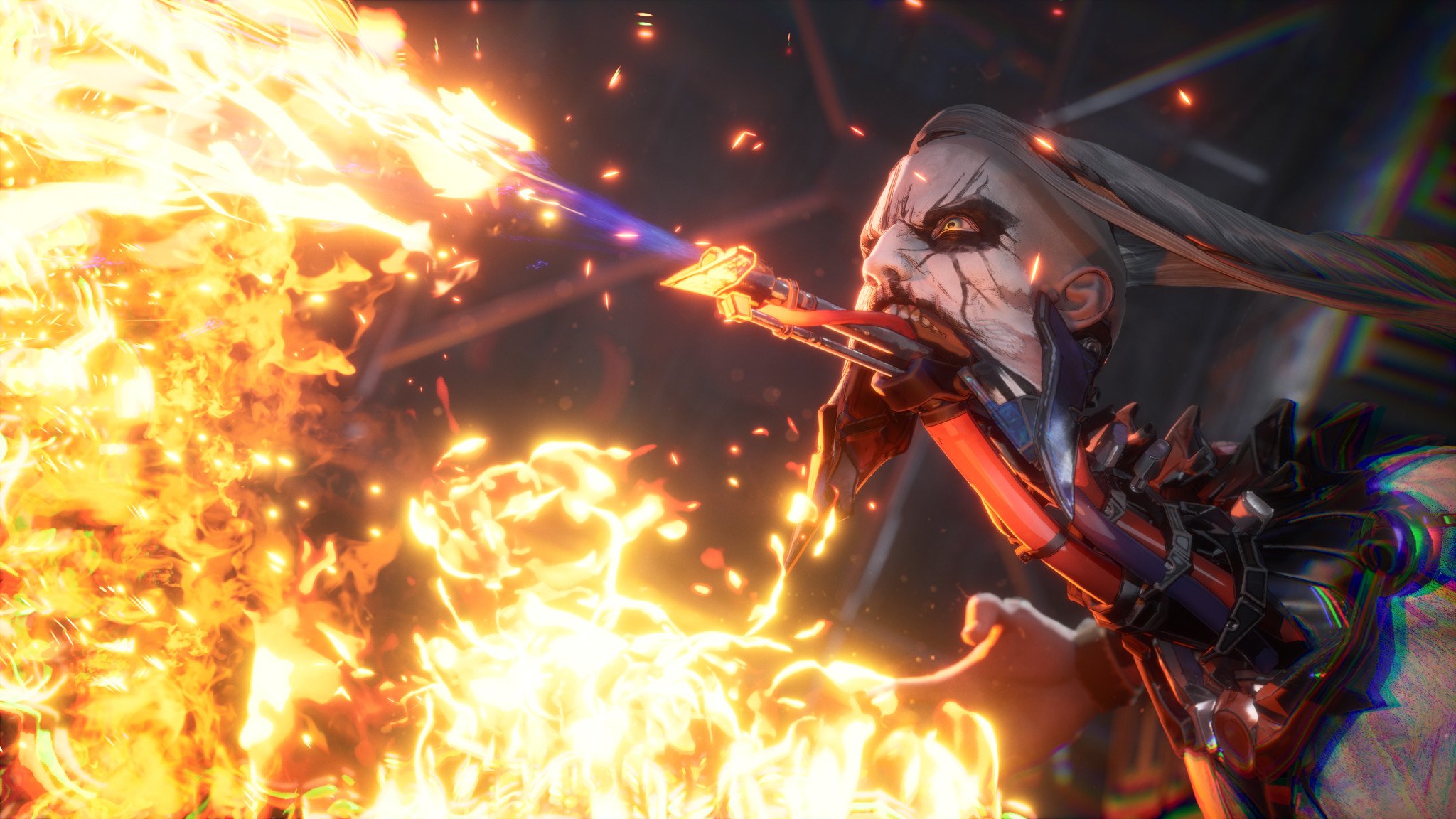
Samuel Tolbert: There's a lot of readability in the characters. That's what I like. There's a lot of subtle details like Gizmo, you know, obviously, she's a mechanic, working with robots, but at the same time in her outfit, you can see the roller derby garb. So it's like, okay, yeah, that makes sense. I get that. So how do you go about balancing it then? Do you ever have to go and say, 'Okay, no, this is too far. This is too art-driven. We're not actually achieving a character.' What's the process of finding the right amount of crazy?
McElligot: We to and fro, and it goes around a loop. Most characters are design-led, some are art-led when you kind of come up with an idea. And then the designers like it so much, they try and make it fit.
Mellow: I think it's a really good question because there are there are certain ideas that people come up with that we know are a bit too outlandish, and I think originally it was like it was one of those things where it's 'How far can we go with this sort of stuff?' I think Mekko, as an early character, he was too outlandish, and we knew that with our lineup, there was no way we could put a dolphin in a mech suit now, but we loved it, right? And as the characters diversified, we realized you know; maybe there's space for characters who are a bit more weird now, because we have some characters that are maybe a bit more easy to understand.
And I think that a lot of that was intentional. So you kind of want to have entry point characters like Daemon, you look at him, you go, 'Yeah, I get it.' He's kind of like a street samurai. You need those characters to pull people in and get them excited, and maybe they can play him first and get a handle the mechanics. But then what's exciting and I love about these types of games is you can have a really nice juxtaposition between different types of characters. And that sort of elevates a character in its own light. Like if someone's yellow, then you've got a blue character and then all of a sudden, it's like the yellow is more yellow because that character is blue. And it's the same with that kind of character design sensibility, if you've got a very simplified easy to understand character than a character that's a bit more outlandish. It kind of helps you to sort of place the characters in it against each other.
McElligot: We spend a lot of time adjusting silhouettes and things in-game. So we'll come up with like an approximation, a very low-resolution mesh from a kind of simplified concept. It goes to tech art to rig it, then Warwick will come up with a ton of poses that kind of describes the character, you know, their actual personality, like how they hold themselves, things like that. Then from that, you kind of put them against other characters. You look at them and go 'This character is way too small or too thin,' or you can't even see that weapon or their augments. So you have no idea what they're going to do.
Particularly for a new player you know, if you've got four guys running at you, you want to have at least a loose idea about whether that person is going to be in your face or standing kind of over there and when you see someone like Daemon, where he's got his katana, you kind of know what he's gonna do. And so we do spend a lot of time looping around Justin silhouettes there's issues parts the geometry passing through other parts.
So you know, the art informs the character team that informs the animation that kind of comes back. And we just keep looping around until it starts to feel like we got something but even then, seven months down the line, people will play it and go 'I just, this character is doing my head in. This character, in this scenario, on this level, I can't even see it!' Then we review it and maybe it's an effect change over the top or the color of the helmet.
Mellow: Nid's hair changed color numerous times. We always knew we wanted it sort of pale, but we just never quite got it right and just kept going back to it, kept changing the shade.
Bleeding Edge designing for everyone
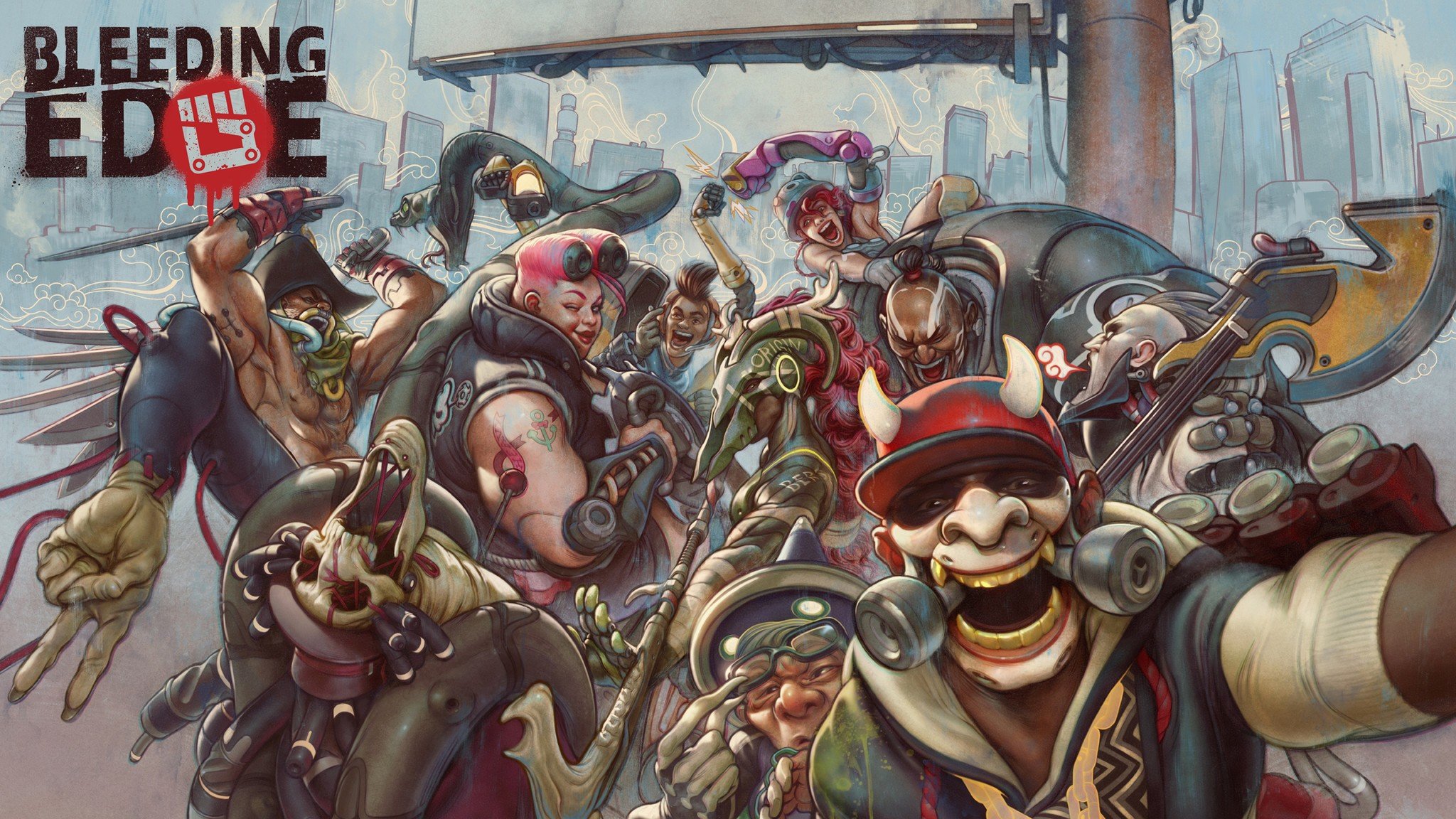
Samuel Tolbert: And that sort of feeds into accessibility, which is a very big discussion. Right now, making sure that maybe someone who is colorblind in certain aspects, they can only see certain hues. Xbox, I think, as a whole, is doing a very good job going into accessibility. So can you talk about that affects your design approach or how you balance things out?
McElligot: So we had to do a lot in this area, mostly UI, because I don't know if you really notice it, but you look at the character, and you know their form, but to know what team they're on; generally you're looking at the trim and the bar above them. So we have that kind of the color adjustment for that, so it's easy for players to pick up. Microsoft did give us a huge list of things to try and tackle, saying, 'We want this, and this will be great. We should do this.' It was like, 'Whoa, we had some ideas, but that's a lot of stuff, way more than we were anticipating.' It was challenging at the time, particularly as we were trying to finish, there was a lot of extra work to do.
But then we saw, you know, a video on YouTube with this chap, I think he has really bad vision. Very visually impaired, and he was saying 'Oh, they've got these options. This is so awesome!' And that's really kind of like uplifting and a really nice feel, and that was like 'We need to do more in this area.' So there's other stuff we're looking at now and how we can improve it.
Mellow: And it was a conscious decision at the studio as well. I think, you know, we had one of the directors at the studio say 'So this is something we are going to pioneer now, this is gonna be something that's gonna be part of every game we make. And it may have not been something that was at the forefront of other games we've made, but certainly moving forward as a company. It's like it's literally the thing.
McElligot: So we've got Dorian, who's our UI guy. I think he's arranged for like a load of people to come in and test stuff, you know, see how in what areas they might have difficulties and see if there's things that we can offer for improvement.
Bleeding Edge built with support
Samuel Tolbert:: I guess, talking about the list Microsoft gave you, that feeds into another question, which is how has perhaps the acquisition affected the development of the game?
Mellow: So thankfully, one of the coolest things about the acquisition was that Microsoft love Ninja Theory and what we were doing and but one of the things that was important to the acquisition was that Ninja Theory still have, you know, complete ownership of the creative process on our games. And so, really, in terms of our game, Microsoft hasn't really affected our game and the way that we've developed it, other than the kind of support we've been given.
So it's been really great. I think it's like, for example, in games past, our game was always run the risk of trying to find the right player base. And being given a platform, even just doing this interview, this never would have happened if we'd never been part of Microsoft. And so it's kind of allowed a small team at Ninja Theory, you know, having this 'indie-AAA' kind of dev cycle, you know, it's really hard, you're 15 people making a game, and it's like, 'Man, how are we going to get this to the world?'
And then having Microsoft be all 'What else can we get you, how can we help you guys, maybe we'll get you to help open E3, what do you think about that?' and we're just like 'Whoa, yes, that sounds cool. We'll take that!'
McElligot: There were concerns, you know, when Microsoft bought us out. 'So what does that mean?' and people were a bit nervous, but thankfully, it's actually been pretty awesome. They're very hands-off. Let us do our stuff, and they're there if we need them. And we also have a bit more money. So we can buy some software, we can upgrade our computers. I mean, it's not trivial stuff. It means something you know, when you survive for a long time, we weren't struggling for money, but it's been challenging. It's just a nicer feeling now. And you do feel supported. So that's good.
Bleeding Edge tickling the ears
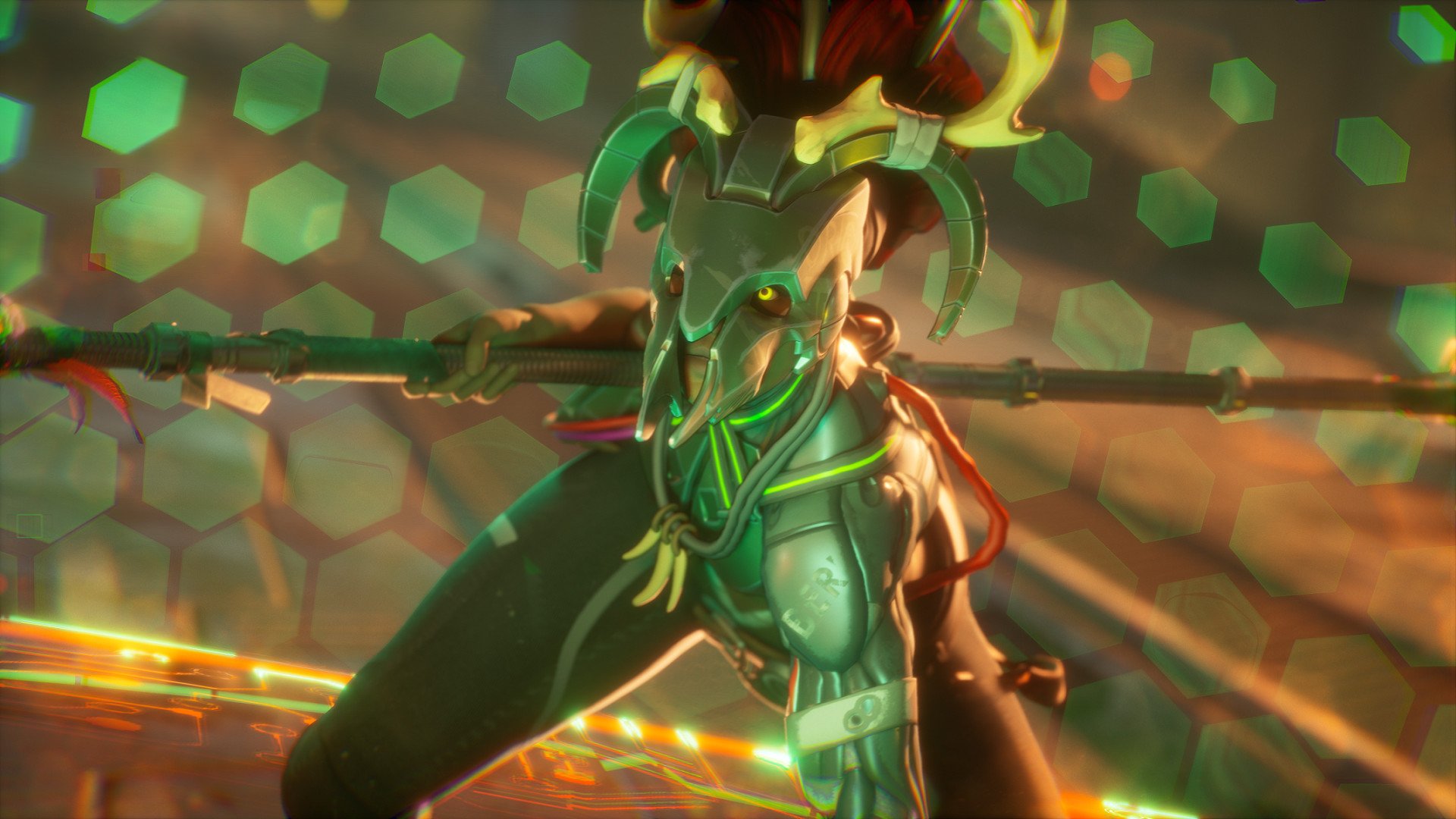
Samuel Tolbert: Bleeding Edge pops in a lot of ways, both visually and in the audio. So when you approached the sound design for this game, did it the idea of what it sounds like come around the same time as you guys were figuring out what it looked like?
Ninja Theory, senior sound designer, Daniele Galante: It came a bit later because we started to work on sound a bit later than art. So we started about two years ago to work on sound design for Bleeding Edge. And the visual direction was consolidated, you know, Aaron and the rest of the team already made most of the models. Of course, it was not polished, but the vision was there, and that helped us a lot because it's a very strong vision, and you can see that. Like, it's actually almost controversial, the character design of this game, some people really love it, some people just find it too weird. That's a good thing for me. We're actually really happy about the reaction of people.
And so for us, it was much easier to find a sound perspective that would fit the art style. And it's definitely something that what we wanted to achieve, you know, it was not really easy, to just support the art, the art, and the visual side in animation. With our audio, we just want to, of course, we want to enlighten you, want to make it keep popping out even more.
And you know, the characters, they're so quirky, there's so weird, they just really don't take themselves seriously, and they just move and behave and look in such a creative way that we just had to follow this part with the sound design. So we wanted to have sounds that are not necessarily realistic, but it just pops out, comes to your mind, and gives even more personality to the character.
To do that, we have lots of inspiration with anime; I was a big fan of anime. Now I'm a bit less a fan because I have less time. When I was young, man, I watched so many. So it was actually pretty cool because I had to do a kind of a nostalgia moment, rewatch all these old anime, I was loving like Ghost in the Shell, Akira, Dragonball, One Piece, all these kinds of anime. And you know how they do sound design for this type of thing. It's like completely ignoring what the character is really doing, just enforcing a specific action. So if you hear a punch, it will not sound like a punch, it'll be something crazy, it might be an even an explosion because it doesn't really matter that it fits the visual, it matters that it fits the action, the emotion and that's certainly something that we try to do with Bleeding Edge.
Creating every single sound, every single ability, every single movement completely unique, which is also something that comes in very handy for a player. Because when you have such unique sounds, for each ability, it will help you while you're playing to just understand what is going on without even looking at it. When Kulev puts a ward, it will always sound that way, and you know, 'Ah, okay, I can get healed here.' And same goes for any other. When Nidhoggr will throw the guitar to try to stop you, you will immediately understand, 'Okay, that's a stun guitar. I might have to evade or jump to avoid to be being stuck.
Samuel Tolbert: I noticed, you know, obviously you've got Daemon, and there's a lot of subtle hip-hop vibes. And then there's maybe even some pop for some of the other characters. How do you go about balancing that?
Galante: So, with the music, we definitely try to reflect the game. So all these characters are made with different body augmentations. And that is definitely something we try to express in the music. The music is like a collage of a lot of genres. So we have pop, but we also have electronic music.
We're returning to music from the 90s because the 90s was a big source of inspiration for this game, not only for sound but for everything so electronic music, but then we have more modern electronic music. But at the same time, we start to put some funk in it because this game is a very positive attitude, these people are not fighting because they're enemies, their friends, they just love to fight. And that's different, something that we wanted to give to express us in the music, like the positive vibe. You know, just having fun here. Very upbeat.
Then there's a bit of hip hop, we have a bit of rock. And we just try to glue them all together in these little pieces. So the music keeps changing a lot. And it becomes very interesting and roughly kind of represent each character with every little piece, and it definitely worked well because if there is something we got a lot of feedback from in the beta, it was that people love the music, to a point that they are begging us to put it in-game while you fight, which was something that we tried to avoid at the beginning because this game is meant to be competitive.
[...]The idea was that music in-game would be distracting, many competitive games don't have music in-game. We put it at the beginning and the end, and then, of course, in the menu. But you know, we just landed up on Game Pass, which is an amazing opportunity for us because it gave us this huge player base. And Game Pass has any type of game in it. So there's lots of people that maybe are not very interested in the competitive side was and just want to play it for fun. You know, it's just a game and you play because you want to have fun. That's the whole point of being a game. At least this game, maybe other games, they're more entertaining, but I wouldn't call them fun, maybe they're more dramatic. So that is definitely something that, for example, now we are considering and maybe have an option. We will definitely have the option to turn it off.
Samuel Tolbert: Will we be able to get the soundtrack? Maybe separately in the future?
Galente: It's something that we would love to do. And hopefully, we will do it. The problem is we're a small team. Sure, sure. And of course, if you want to release something new, you have to prepare it, and right now we're very focused on just finishing the game, but once it's out, it's definitely something that we would consider doing, and we definitely try to find some time to do it. I cannot tell you 100% yes. But I would love to. I know that Fran, our commercial lead, would love to.
Bleeding Edge looking to the next generation
Samuel Tolbert: So this is coming at the tail end of the Xbox One's life cycle, the [Xbox] Series X has been revealed. As a sound designer, is there anything about the possibilities there that excites you in terms of stuff you could be able to do on that, that you haven't been able to do on the current machines?
Galente: Yeah, I mean, a thing that Microsoft does very well is taking care of audio, which is an aspect that sometimes might be a bit overlooked, you know. But that's a big mistake, because most of the immersion depends on it. And Microsoft is definitely pushing hard on the audio. For example, in the new Series X, we're going to have a dedicated chip, which allows us to be even more creative, because you know what, in the end of the day, making games is always a fight against performance. It's always like a fight against limitation. So, passing from generation to generation is always a relief, because it's always gonna be the possibility to be even more creative while worrying a bit less.
So yeah, I mean, we work very well on Xbox One S, we work very well on Xbox One X, and I'm pretty sure we will work pretty well on Series X too. PC, too, absolutely, though PC is a bit more complicated.
Nearly here
Bleeding Edge is set to release on Xbox One and PC on March 24. For more information from this recent preview event, you can take a look at our character guide for Mekko and our interview with creative director Rahni Tucker.
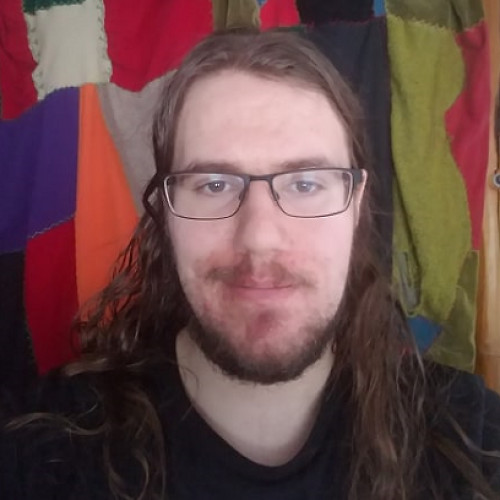
Samuel Tolbert is a freelance writer covering gaming news, previews, reviews, interviews and different aspects of the gaming industry, specifically focusing on Xbox and PC gaming on Windows Central. You can find him on Bluesky @samueltolbert.bsky.social.
